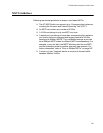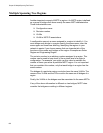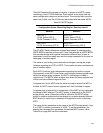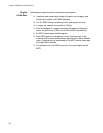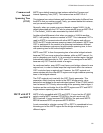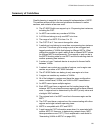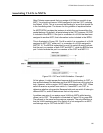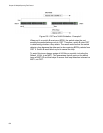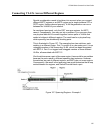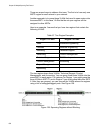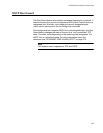
AT-9000 Switch Command Line User’s Guide
653
Summary of Guidelines
Careful planning is essential for the successful implementation of MSTP.
This section reviews all the rules and guidelines mentioned in earlier
sections, and contains a few new ones:
The AT-9000 Switch can support up to 15 spanning tree instances,
including the CIST.
An MSTI can contain any number of VLANs.
A VLAN can belong to only one MSTI at a time.
The range of an MSTI ID is from 1 to 15.
The CIST ID is 0. You cannot change this value.
A switch port can belong to more than one spanning tree instance
at a time. This allows you to assign a port as an untagged and
tagged member of VLANs that belong to different MSTIs. What
makes this possible is a port’s ability to be in different MSTP states
for different MSTIs simultaneously. For example, a port can be in
the MSTP blocking state for one MSTI and the forwarding state for
another spanning tree instance.
A router or Layer 3 network device is required to forward traffic
between VLANs.
A network can contain any number of regions, and a region can
contain any number of AT-9000 Switches.
The AT-9000 Switch can belong to only one region at a time.
A region can contain any number of VLANs.
All of the bridges in a region must have the same configuration
name, revision level, VLANs, and VLAN to MSTI associations.
An MSTI cannot span multiple regions.
Each MSTI must have a regional root for locating loops in the
instance. MSTIs can share the same regional root or have different
roots. A regional root is determined by the MSTI priority value and
a bridge’s MAC address.
The regional root of an MSTI must be in the same region as the
MSTI.
The CIST must have a regional root for communicating with other
regions and single-instance spanning trees.
MSTP is compatible with STP and RSTP.
A port transmits CIST information even when it is associated with
another MSTI ID. However, in determining network loops, MSTI
takes precedence over CIST. (This is explained in more detail in
“Associating VLANs to MSTIs” on page 655.)



